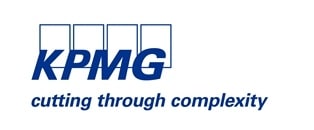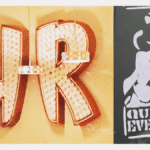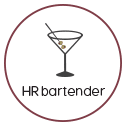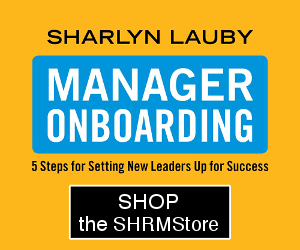As you guys know, I’ve been in human resources for a very long time. And over the years, I’ve seen these waves where a constant stream of articles come out talking about HR’s value to the organization and HR’s ability to be strategic. We’re kinda in one of those modes right now. You can check out these recent articles that have been written about the profession here and here.
As I’ve been reading these latest articles, I came across a study from KPMG titled “Rethinking HR”. What stood out to me about this study was some real honesty about the human resources profession. It didn’t paint a total gloomy picture that HR is hopeless but it also wasn’t a rah-rah piece. Basically, moving the needle in HR takes hard work. But, it can be done.
I enjoyed the read so much that I reached out to Robert Bolton, a partner at KPMG and one of the key contributors to the study, to see if he would share his insights. Lucky for me, he did. If you’re not familiar with KPMG, they are a full service audit, tax and advisory firm. Within their advisory function, they have a management consulting group that helps clients solve strategic and operational issues to protect the sustainable value of their business.
Robert, why did KPMG decide to sponsor the “Rethinking HR” study?
[Robert] We have a thriving People and Change practice that has effectively grown through word of mouth. However, we want more people to know about what we do and our points of view on people management. A study such as this helps us to project a voice into the market-place that can go beyond just our direct clients. And with the great breadth experience across our professionals, we also feel we have things to say that are worth saying!
You mentioned in the report that HR has been stuck in a “doom loop” for over a decade. What’s a doom loop?
[Robert] It’s a cycle of behavior that repeats itself. My background is systems thinking and I am always looking for the cycles and patterns of behaviour that people follow because of the systemic structures they are subject to. If you don’t manage the systems that you participate in they tend to manage you and shape your destiny! In the case of HR, this cycle is a vicious cycle hence the phrase “Doom Loop”.
Basically for the last 15 years, HR has been in this doom loop or vicious cycle and it works like this:
The problem and the trap that HR finds itself in is that there is a perceived lack of credibility within HR and an inability to deliver value. In an effort to rectify this problem, symptomatic fixes are pursued, via the latest generic best practice models.
The net result is a diversion of attention away from where the real value lies – in pursuing solutions tailored to the unique circumstances and requirements of any given business.
At the conclusion of all that, strategic involvement and influence is actually diminished and so the cycle repeats. That’s the doom loop; that’s the vicious cycle which HR finds itself unable to break out from.
How has this happened? It’s all about favoring the generic solution over the unique solution. I believe that HR’s pursuit of the universally acceptable approach has been its own undoing.
The generic application of the Ulrich model (familiar to many HR professionals) can be seen as a contributory factor here. I think that if you looked at a random selection of HR teams you would see more similarities than differences – and I don’t see how that can be right.
How can an HR team that supports a business whose USP is based around product innovation be so similar to a team supporting a business based around operational excellence, for example? They shouldn’t be so similar – as they should both be uniquely configured in order to drive value within their business.
As a HR pro, I’ve been listening to this “human resources needs to be a strategic partner” conversation for years. In your opinion, is this a case of HR still doesn’t realize there’s a credibility gap? Where I struggle is, how many Keith Hammonds-type articles have to be published before the profession gets it?
[Robert] I do wonder about this too. As I have said, this failure to breakout of the prevailing pattern has been around for 15 – 20 years now and if you look at publications, conferences, blogs, etc., the language simply has not moved on. It’s all a variation on a theme of how can HR be a true business partner, be aligned to strategy, support the business etc. Even this language betrays the wrong mindset. To be successful, HR should be an integral part of the business, not be a partner to it. It should drive strategy and its execution, not be aligned to it. It should be a source of competitive advantage, not a back office function.
I think that finally things are about to change. Perhaps this is just the delusion of the eternal optimist but other (insightful) commentators and our clients are beginning to use language and thinking that shows the promise that we will, finally, break out of the doom loop. They are looking for the next step beyond a generic Ulrich type of model.
If HR understands there’s a perception issue, how do they fix it? There are many human resources competency models out there.
[Robert] In a nutshell, by developing very distinctive and differentiated functions and practices which focus on competitive advantage…on creating and protecting the long-term value of their organizations. Or put another way, by abandoning generic best practices and models.
I’m the CEO of a company with a human resources department that’s in the doom loop. Is there anything I can do to help my HR leadership team? Or do they need to do it themselves?
[Robert] By resisting anything that sounds like the “next big thing” and fads and fashions associated with talent management, performance management and employee engagement. Instead CEOs should be seeking strongly evidence-based HR solutions. Evidence that is based on the specifics of the enterprise and its value chain. One way to encourage this is create a dashboard of insightful and predictive measures that illuminate the people agenda in the business NOT the activity levels in the HR function.
CEOs and top teams must also be sure that they are clear about sources of competitive advantage in the business, the optimum value chain and critical success factors for strategy execution. This is all “grist to the HR mill.”
Last question, I’m a human resources leader working for a company. My CEO thinks my job is to “hire, fire and keep the beer cold at the company picnic”. What can I do to show my leadership team I can bring more to the company?
[Robert] I am tempted to say look at the answer above!
Also hiring can be hugely value driving if you have agreement about the critical roles in the value chain and then introduce highly valid and objective methods of recruitment based on the skills and capabilities exhibited by the strongest performers in the business that occupy these roles. One company I know set about introducing this approach in its sales force and boosted revenues by 20% within the year. They soon started to pay attention to HR.
Many thanks to Robert and the team at KPMG for sharing their expertise. If you’d like to check out the “Rethinking HR” study for yourself, you can download a copy here (no registration required). Also check out their management blog called Advice Worth Keeping.









Dan Schultz says
I was curious if there was additional information about the system Robert references when he says,
“One company I know set about introducing this approach in its sales force and boosted revenues by 20% within the year. They soon started to pay attention to HR.”
Thanks!
~Dan
Corey Feldman says
Great interview. Going to have to read the whole report.
Marc Effron says
Thanks for this article. Articles about HR’s lack of impact rarely seem to address the only true cause – HR practitioners. Clear support for that comes from the New Talent Management Network’s 2013 State of Talent Managers report released this week (get it here). Two core findings of interest:
1) HR and talent leader’s primary reason for being in the profession is to “help people grow and develop.” A distant second is “Help my company to maximize it’s profitability” (or distant third for those in Western Europe). If our primary agenda isn’t helping our business to make money, then our strategies and attitudes are going to reflect that. Of course business leaders won’t give HR respect if they don’t think we’re working on the same strategy they are.
2) 68% of respondents said that they were either Role Models or Very Capable across six key talent management and HR capabilities. Think of these as #4 and #5 on a 5 point scale. These ratings held with little difference by age, level in the company or experience. If we think we’re great at what we do, we’re far less willing to examine alternate approaches or to question our fundamental assumptions about what successful HR looks like.
While Robert’s comments are interesting, it might be helpful to first look at the role played by HR leaders when trying to determine why HR isn’t working.
Marc Effron says
Here’s the link http://bit.ly/SOTMlink
Jo Dodds says
Thanks for this post Sharlyn.
I’ve fairly recently arrived back in the HR world after seven years running my own marketing and social media business and was amazed to read that the ‘navel gazing’ as I used to call it is still happening around here!
And interesting to read Robert’s comments about the Ulrich model as I read his new book over Christmas and he is now talking about another paradigm for HR that reconciles some of the discussed challenges with a big emphasis on HR looking outside of the business to determine internal HR strategy.
My background was in retail HR with a strong involvement in operations and customer care and I always worked where I loved the product. And it’s only now that I realise what an absolute advantage I had. I couldn’t be anything other than focused on our customers and product, which was then reflected in what I did in HR – clearly! It would have been weird to not do that.
Absolutely agree with Robert that HR needs to focus on supporting the business to achieve business objectives, which will create a different approach depending on the business. I don’t think most HR people would disagree though, so the question is how to make that ‘make sense’ for people? How to help HR professionals to create/see a direct link between them and their customers (& I don’t mean their internal ‘customers’!).
I’ve waffled on enough so I won’t bang on about it but one tactic would be to develop an interest in the social world and ‘listen’ to your organisation’s external customers and stakeholders, research your industry online, interact with thought leaders in your industry, and generally turn your HR outlook outside in!
Zara says
Hi,
Its a very nice blog i must say. Can you tell me how to write literature review about HR?
Robert says
Great comments folks: Marc, I certainly think that the skills in HR need addressing. In particular a core skill that seems to be missing is that of “Systems Thinking” i.e. being able to see the organisation as a complex system where intervening in “chains of cause and effect” is not as simple as throwing more money at something or applying the hopelessly misguided presecriptions of the “War for Talent.”
Jo, I certainly think that the “outside in” approach that you advocate is a good way of driving that strategic differentiation that is so important for HR. Very interesting also that your absence and then return to the HR scene shows not much has changed!
fatile Ayobami says
Thanks for this post Sharlyn.
In my own opinion, the major function of any HRM or r depart…ent in an organisation is to manage the human resource in the organisation to effectively co-ordinate other avaliable resource so as to achieve the main aim of the organisation. Therefore, HRM must work towards this ends no matter their circumstances.
Gareth says
Robert, I appreciate what you are saying. I know Dave Ulrich personally and have worked with him in a voluntary capacity and I am a big fan of his and Norm Smallwood’s research. I guess you can say I am an Ulrich follower. I believe no model is and ever will be prefect and so every model needs continuous revamping but a huge problem appears to be the users of the model. Ulrich will be the first to argue that HR pros did not fully understand how to use his model. Outside customer focus has always been a huge part of his model. It appears the only real take away for most HR depts was the catchy title of “HR Business Partner.” So unfortunate because Ulrich et al. expected so much more. The model was there to guide decision making and users did not fully grasp the model and I am not sure they will do the same with any other. I agree generic usage cannot sustain strategic decision making and Ulrich never expected his model be used for generic use. Enough of all this justifying a seat at the table talk, HR pros need to get the basics right and function like a business owner, concerned about investor sentiment, company financial statements, product innovation, community stakeholder relationships, supply chain challenges/opportunities etc.
If we fully understand what Ulrich was expecting HR pros to change, and went about meeting those expectations, HR pros would not still be at square one with a new fancy sounding title.
It’s great that Ulrich was consulted for this report – he deserves a great deal of respect for preparing a solid foundation for more research and further improvements but I will not be surprised 20 years down the line to find that we have gone full circle again because HR professionals just don’t seem to get it though they have become great at writing about it as seem from years of public discourse.